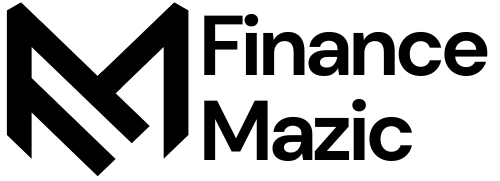In today’s competitive job market, particularly in the finance industry, more than having a well-crafted resume is required. With employers’ widespread adoption of Applicant Tracking Systems (ATS), your resume needs to be human and AI-friendly. In this comprehensive guide, we’ll explore how to optimize your CV for ATS, ensuring that your application makes it past the initial AI screening and into the hands of human recruiters.
Understanding Applicant Tracking Systems

Before we discuss optimization techniques, let’s first understand what an ATS is and how it works.
What is an ATS?
An Applicant Tracking System is a software application that helps companies manage their recruitment process. It’s designed to collect, sort, scan, and rank job applications.
How does an ATS work?
- Collecting applications: When you submit your resume online, the ATS stores it in a database along with your personal information.
- Parsing resumes: The ATS breaks down your resume into categories like work experience, education, skills, etc.
- Keyword matching: It scans for specific keywords related to the job description.
- Ranking candidates: Based on the keyword matches and other criteria, the ATS ranks applicants.
- Filtering: It filters out resumes that don’t meet the minimum requirements.
Now that we understand how an ATS works let’s examine how to optimize your resume to pass through this AI gatekeeper.
Keyword Optimization: The Heart of ATS-Friendly Resumes

Keywords are the foundation of ATS optimization. Here’s how to effectively use them in your resume:
Identifying the Right Keywords
- Analyze the job description: Carefully read the job posting and identify key skills, qualifications, and experiences mentioned.
- Use industry-specific terms: Include finance-specific keywords like “financial modeling,” “risk assessment,” “portfolio management,” etc.
- Include both hard and soft skills: While technical skills are crucial, remember to include relevant soft skills like “communication,” “leadership,” or “problem-solving.”
Example: Keyword Optimization for a Financial Analyst Position
Let’s say you’re applying for a Financial Analyst position. Here’s how you might optimize your skills section:
Before optimization:
Skills:
– Good with numbers
– Can use Excel
– Familiar with financial statements
After optimization:
Skills:
– Financial modeling and forecasting
– Advanced Excel (Pivot Tables, VLOOKUPs, Macros)
– Financial statement analysis (Income Statement, Balance Sheet, Cash Flow)
– Data visualization (Power BI, Tableau)
– Risk assessment and management
Keyword Placement
It’s not just about including keywords; their placement matters too:
- Use keywords in your resume summary or objective. This will immediately signal your relevance to the ATS.
- Sprinkle keywords throughout your work experience: Describe your achievements and responsibilities naturally.
- Create a dedicated skills section: This allows ATS and human recruiters to scan easily.
Remember, while keyword optimization is crucial, do just what is necessary. “Keyword stuffing” can make your resume seem unnatural and may be flagged by more sophisticated ATS.
Formatting for ATS Success

The way you format your resume can significantly impact how well an ATS can read and parse it. Here are some formatting tips:
Choose the Right File Type
Most ATS prefer simple, text-based files. Here are the best options:
- .docx (Microsoft Word): This is widely compatible with most ATS.
- .pdf: While generally good, ensure it’s a text-based PDF, not a scanned image.
Avoid file types like .jpg, .png, or .tiff, as ATS cannot parse these image files.
Use a Clean, Simple Layout
- Stick to standard sections: Use common headings like “Work Experience,” “Education,” and “Skills.”
- Avoid fancy formatting: Tables, text boxes, and columns can confuse ATS. Stick to a simple, linear format.
- Use standard fonts: Arial, Calibri, or Times New Roman in 10-12 point size are safe choices.
- Avoid headers and footers: Some ATS need help reading information in these areas.
Example: ATS-Friendly Resume Structure
Here’s a simple structure that works well for ATS:
[Your Name]
[Phone Number] | [Email] | [Location]
Professional Summary
[2-3 sentences highlighting your key qualifications and career objectives]
Skills
[List of relevant skills, separated by commas or bullet points]
Work Experience
[Job Title], [Company Name]
[Employment Dates]
– Achievement/Responsibility
– Achievement/Responsibility
– Achievement/Responsibility
Education
[Degree], [Major], [University Name]
[Graduation Date]
Certifications
[Certification Name], [Issuing Organization], [Date]
Quantifying Achievements: Speaking the Language of Finance

In the finance industry, numbers speak volumes. Quantifying your achievements not only impresses human recruiters but also helps ATS understand the impact of your work.
Tips for Quantifying Achievements
- Use specific metrics: Instead of “increased profits,” say “increased quarterly profits by 15%.”
- Show scale: Mention the size of teams you’ve led or budgets you’ve managed.
- Compare to benchmarks: If you outperformed industry standards, mention it.
Example: Quantified Achievements for a Financial Advisor
Before quantification:
– Grew client portfolio
– Provided financial advice to clients
– Improved client satisfaction
After quantification:
– Grew client portfolio by 25% YoY, outperforming market index by 10%
– Provided financial advice to 50+ high-net-worth individuals, managing combined assets of $100M+
– Improved client satisfaction scores from 85% to 97% through personalized service and consistent 15%+ returns
Tailoring Your Resume for Each Application

While it might be tempting to create one “perfect” resume and use it for all applications, tailoring your resume for each job significantly increases your chances of passing the ATS screening.
How to Tailor Your Resume
- Match the job title: If you’re applying for a “Financial Analyst” position, and your current title is similar, use the exact title from the job description.
- Mirror the language: Use the same terms and phrases in the job description.
- Prioritize relevant experiences: At the top of your resume, list the most relevant jobs and skills for each application.
Example: Tailoring a Resume Summary
Let’s say you’re applying for two different positions: a Financial Analyst and a Risk Management Specialist. Here’s how you might tailor your resume summary:
For the Financial Analyst position:
Results-driven financial professional with 5+ years of experience in financial modeling, data analysis, and forecasting. Proven track record of delivering actionable insights that have driven 20%+ revenue growth. Expertise in advanced Excel, SQL, and Power BI.
For the Risk Management Specialist position:
Detail-oriented finance professional with 5+ years of experience in risk assessment, compliance, and financial analysis. Successfully implemented risk management strategies that reduced potential losses by 30%—strong background in regulatory frameworks, including Basel III and Dodd-Frank.
Beating the Bots: Additional ATS Hacks
Here are some additional tips to help your resume perform well in ATS:
- Use standard section headings: “Work Experience” is better than “Where I’ve Made an Impact.”
- Avoid images and graphics: Most ATS can’t read these.
- Don’t use abbreviations: Spell out terms, especially for job titles and educational degrees.
- Include your complete address: Some ATS use this for location-based filtering.
- Keep formatting consistent: Use the same date format throughout, for example.
The Human Touch: Don’t Forget the Readers

While optimizing for ATS is crucial, remember that if your resume passes this stage, human recruiters will read it. Here are some tips to appeal to human readers:
- Tell a story: While using keywords, ensure your resume tells a coherent story of your career progression.
- Show personality: Let your unique professional persona shine through in your summary or cover letter.
- Highlight soft skills: While ATS focuses on hard skills, human recruiters often value soft skills highly.
- Proofread: ATS won’t catch typos or grammatical errors, but human recruiters certainly will.
Conclusion: Striking the Right Balance

Creating an ATS-friendly resume is a balancing act between optimizing for AI and appealing to human recruiters. By understanding how ATS works and implementing the strategies we’ve discussed, you can create a resume that successfully passes through ATS and impresses human recruiters.
Remember, your resume is your first impression in the job application process. In the competitive world of finance, having an ATS-optimized resume can be the difference between landing your dream job and getting lost in the application black hole.
As you craft your AI-friendly resume, keep these key points in mind:
- Use relevant keywords naturally throughout your resume.
- Maintain a clean, simple format.
- Quantify your achievements with specific metrics.
- Tailor your resume for each application.
- Balance ATS optimization with appeal to human readers
With these strategies, you’ll be well on your way to creating a resume that not only beats the bots but also showcases your true potential as a finance professional. Good luck with your job search!


